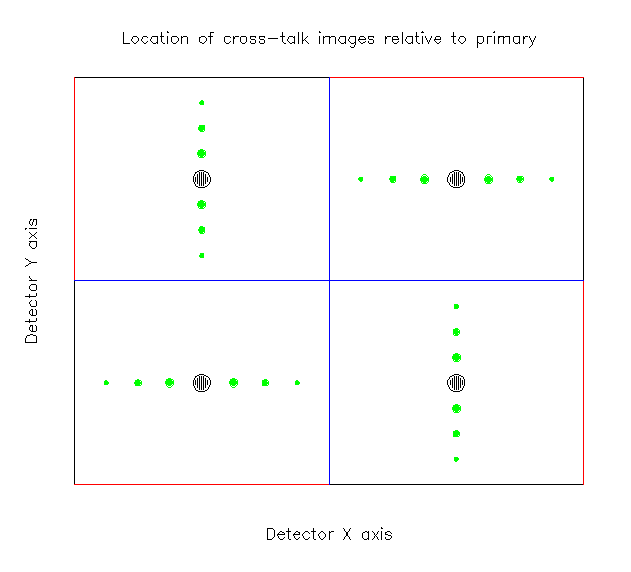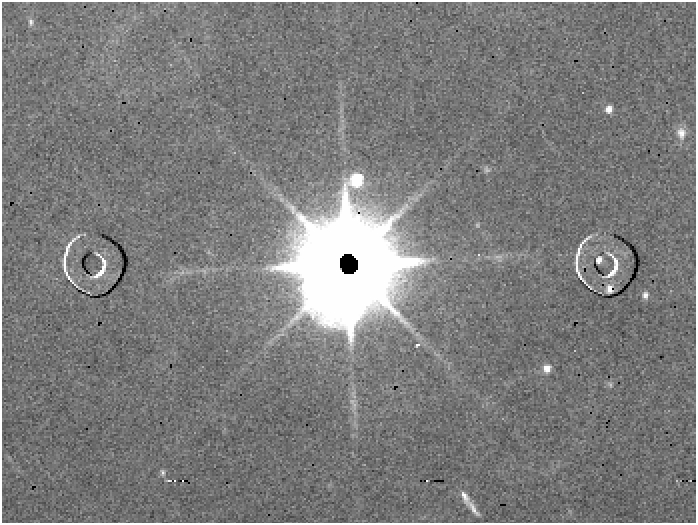All the detectors show similar cross-talk patterns. The cross-talk
artefacts are essentially time derivatives of saturated stars with
either a doughnut appearance from heavily saturated regions (±128 × m
pixels either side, where m is the interleave factor m×m from
microstepping eg. 1×1 2×2 3×3, plus progressively weaker secondaries
further multiples on), or half-moon-like plus/minus images from only
weakly saturated stars. Adjacent cross-talk images have features at ~1%
of the differential flux of the source, dropping to ~0.2% and ~0.05%
further out. Beyond three channels the effect is negligible. The
following figure illustrates where cross-talk images are expected in
detector X-Y space relative to the position of saturated objects for
each quadrant. The cross-talk pattern rotates from quadrant to quadrant
because the readout amplifier for each quadrant is on a different edge
of the detector (denoted by the red lines).

Fortunately these artefacts are non-astronomical in appearance and
do not "talk" across the detector quadrant boundaries, or between
detectors. However, they do not generally stack out for a jitter
sequence.
An example of cross-talk is shown below for a heavily saturated image.
The cross-talk image is to first order the time derivative of the
signal in the saturated image channel along the readout direction.
Significant cross-talk only appears to be generated by saturated
images.




